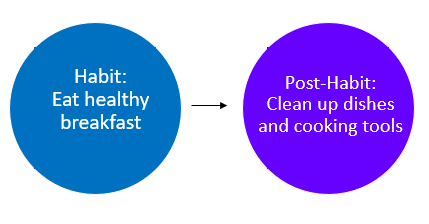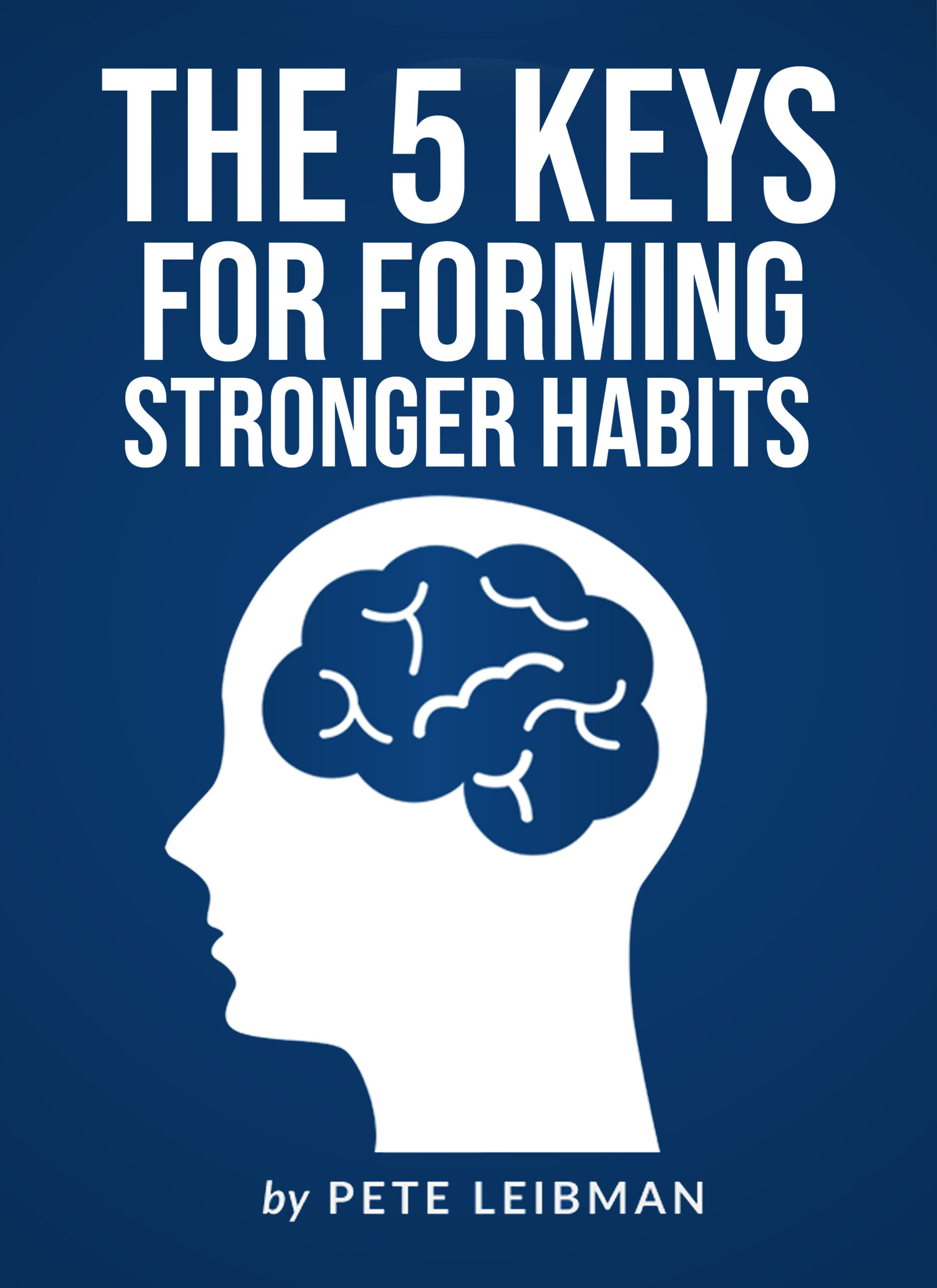
I once tried to make a habit of stretching for 20-30 minutes at my gym each night after work. It seemed like a smart idea.
I exercise each morning and then work at a desk for most of each day. Even though I stand and get up frequently throughout the day, it’s easy to feel stiff in the evening.
The first day of my new habit went well. It was relaxing to take some time in the evening to slow down, disconnect, and stretch. The second day also went well. However, my motivation plummeted on the third day.
Even though I was enjoying the habit of stretching after work, I had not considered another behavior that was required after stretching at the gym: taking another shower.
My stretching sessions did not make me sweat. However, I felt dirty after stretching on the mats at the gym. As a result, I needed to shower each night after returning home.
My habit of stretching at the gym after work lasted less than a week. This had nothing to do with a lack of discipline. The problem was my strategy, which I ultimately changed, as discussed later in this article. I was not aware at that time of something that I now refer to as a post-habit.
What Is a Post-Habit?
People usually think of a “habit” as an isolated behavior. However, many “habits” are actually complex routines consisting of multiple behaviors.
In a prior article, I wrote about a term that I refer to as a pre-habit. As a quick recap, it is a preliminary behavior that has to occur before you can perform a habit.
For example, imagine that you want to form the habit of eating a healthy, home-cooked breakfast each morning. Well, before you can eat a healthy, home-cooked breakfast (habit), you need to shop for ingredients (pre-habit) and you need to cook (pre-habit).

A post-habit is my term for a behavior that has to occur after you perform a habit. For example, after you stretch on stretching mats at the gym (habit), you also need to drive home (post-habit) and take a shower (post-habit).

As another example, after you eat a healthy, home-cooked breakfast (habit), you also need to clean up your dishes and cooking tools (post-habit).

Many habits cannot be performed without certain behaviors being performed first. In addition, many habits require that certain behaviors be performed afterwards.
If you are not careful, post-habits and pre-habits can be big obstacles for making new habits last. Knowing that you have to complete other behaviors before or after a habit can decrease your motivation to perform the habit in the first place. Even if the “habit” feels manageable, the entire routine could feel burdensome.
3 Steps for Managing Post-Habits
Here are three tips on how to deal with post-habits:
Step #1: Identify the post-habits for a habit.
Before you try to form any new habit, ask yourself, “What other behaviors will I need to do after this behavior?” Make sure you understand everything that will be necessary. If the entire routine feels too burdensome, then look for ways to make it simpler and easier at first.
Step #2: Try to eliminate the need for post-habits.
Some post-habits (and some pre-habits) can be removed altogether. For example, after failing in my attempt to form a habit of stretching after work at the gym, I decided to form a habit of stretching after work at home. This switch eliminated my commute from my home to the gym (pre-habit) and my commute back home from the gym (post-habit). Stretching on a clean mat in my home also eliminated the need to shower afterwards (post-habit).
Step #3: Make post-habits easier (if you cannot eliminate them).
Some post-habits cannot be removed altogether. In that case, make them as easy as possible. For example, maybe you want to form the habit of exercising every day, but you are unable to work out at home, or you are uninterested in doing so. In that case, find a good workout venue as close to your home as possible. That would shorten your drive to the gym (pre-habit) and your drive home from the gym (post-habit).
Summary and Final Thoughts
People usually think of a “habit” as an isolated behavior. However, many “habits” are actually complex routines consisting of multiple behaviors.
A post-habit is my term for a behavior that has to occur after you perform a habit. If you are not careful, post-habits (and pre-habits) can be big obstacles for making a new habit last. Even if the “habit” feels manageable, the entire routine could feel burdensome.
Follow these three steps and you will be more likely to make any new habit last in the future:
- Identify the post-habits for a habit.
- Try to eliminate the need for post-habits.
- Make post-habits easier (if you cannot eliminate them).
For more ideas on how to form stronger habits, download my free 40-page eBook below on “The 5 Keys for Forming Stronger Habits.”

Free eBook and Newsletter
Download my free 40-page eBook on “The 5 Keys for Forming Stronger Habits.”
You’ll also receive my free weekly newsletter on how to become your strongest self.
Your email is safe. Unsubscribe anytime.
About the author: Pete Leibman is the Creator of StrongerHabits.com. He is a best-selling author, keynote speaker, executive recruiter, athlete, and peak performance coach. His work has been featured on Fox News, CBS Radio, and CNNMoney.com, and over 500,000 people across the world have read his articles.

